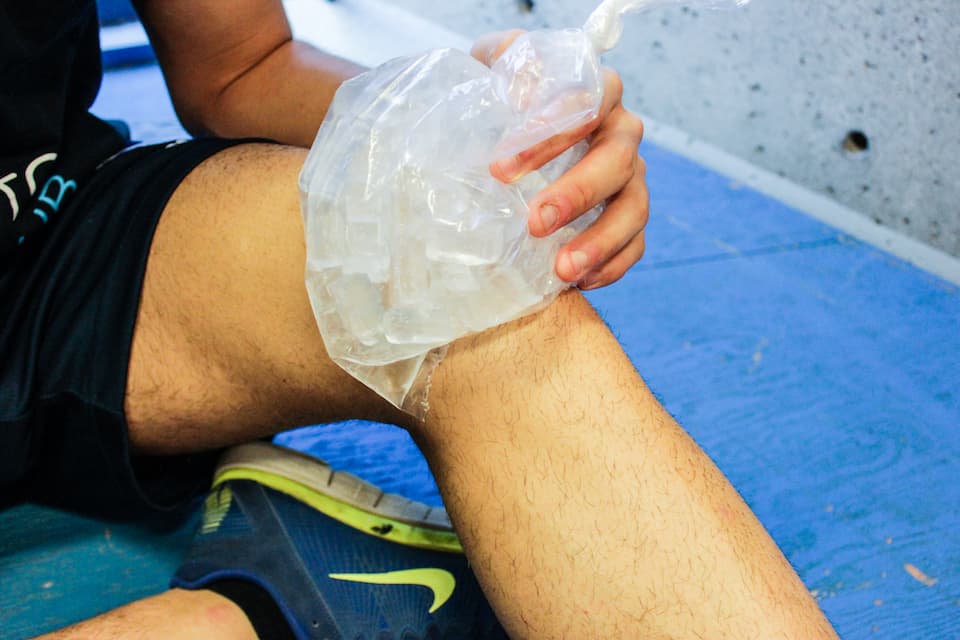When it comes to sports and fitness, how you recover from a hard workout is as important as the workout itself. If proper care isn’t taken, you can actually do more harm than good to your body.
Traditionally, ice packs or ice baths have been considered the go-to method for post-workout recovery; temperatures below 15 degrees Celsius can reduce inflammation and swelling. Recently, however, the icing approach has been called into question. It is now being debated whether heating, instead of icing, makes for optimal recovery.
Numbing the pain
Cryotherapy, or cold therapy, has always been the favoured and recommended method for kick-starting the muscles’ process of recovery — and for good reason.
Icing has proven to numb local pain neurons so the sense of relief from aching muscles is instantaneous. Cold therapy also causes the temperature of the local muscle tissue to drop, reducing inflammation and swelling.
Inflammation is your body’s natural and automatic response to overworked and micro-injured areas, so reducing the amount of inflammation around these areas is an important part of post-workout recovery. Ice treatment also reduces and prevents more serious tissue injuries such as muscle strains and spasms. Heat, on the other hand, has adverse effects. When temperatures above 87 degrees Celsius are applied to inflamed and swollen areas — especially when applied incorrectly — it increases blood flow and the release of inflammatory responses, which could make the injury worse.
This settles the debate, right? Not quite. Although ice treatment has long been the favoured method for post-workout recovery, Some experts advocate using heat instead of cold to treat overworked muscles.
Bringing the heat
After exercise, muscles contract; during the healing process, they slowly relax and return back to their pre-workout state. Due to cold therapy’s numbing effects, using ice will disrupt and delay the muscle’s relaxation, postponing the healing process. Heat promotes this process and aids the muscle back to a relaxed state, thereby contributing to the relief of sore and overworked muscles. Because heat therapy increases blood flow, it also helps to remove by-products from the muscles created during exercise.
The final showdown
Considering the confusion surrounding the topic, there are surprisingly few studies on which method is best.
Cold therapy reduces the inflammation and swelling of sore and injured muscles directly after exercise, but applying ice for prolonged periods of time can actually do more harm than good to your muscles. Heat therapy, on the other hand, could potentially increase inflammation at sites of injury, but it also aids the muscle back to a relaxed state.
With that in mind, icing is the most beneficial when used immediately after a workout to reduce the amount of inflammation and swelling of overworked muscles. Former CIS champion and Varsity Blues track and field athlete Maggie Hanlon agrees and cites a dip in the ice-bath as her go-to recovery method post-workout; former Blues fastpitch player Elizabeth Benn agrees.
Steve Hays, a marathoner and track and cross-country coach for Whitman High School in Bethesda, Maryland, suggests a compromise. “Two cycles of 10 minutes of ice, alternated with two cycles of 10 minutes of heat.”
The ice and heat work together to reduce inflammation and to rid the muscles of by-products created during exercise. Often referred to as contrasting, icing then heating is a method Blues hockey captain Kristi Riseley uses. “I find a combo is best,” she says. “Like switching from hot to cold, back to hot, then cold and follow a pattern. This method gets the blood flowing as the muscles are contracting and relaxing, so it’s great for recovery and removing lactic acid.”
Based on the information we do have, using a combination of icing and heating at the right times is likely the best choice for optimal post-workout recovery.


